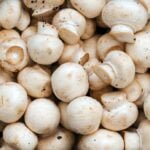what temperature, humidity and FAE does paddy straw need
Title: Growing Paddy Straw Mushrooms: Optimal Conditions for Successful Cultivation
Introduction:
Paddy straw mushrooms, scientifically referred to as Volvariella volvacea, are a preferred edible mushroom selection generally cultivated in heat and tropical areas. To maximize your possibilities of a profitable harvest, it’s essential to create the best circumstances for his or her development. In this blog submit, we’ll focus on the temperature, humidity, and contemporary air alternate (FAE) necessities for cultivating paddy straw mushrooms, offering invaluable insights that may assist you to obtain optimum outcomes.
1. Temperature: The Key to Successful Paddy Straw Mushroom Cultivation
Paddy straw mushrooms thrive inside a particular temperature vary of 80°F to 100°F (27°C to 38°C). It is vital to take care of temperatures inside this vary all through the cultivation course of for optimum fruiting. Avoid excessive temperature fluctuations, as they’ll negatively impression the productiveness of your mushroom beds. Additionally, temperatures under 80°F (27°C) can inhibit fruiting altogether, leading to stunted development.
2. Humidity: Ensuring the Right Moisture Levels
The preferrred humidity stage for paddy straw mushrooms falls between 65% and 80%. Adequate moisture is important for the formation and growth of mushrooms. To preserve the required humidity, common misting or a humidity management system could also be employed. Watering mushroom beds when vital and protecting them with plastic sheets might help create a moist setting, stopping extreme evaporation and sustaining a relentless humidity stage.
3. Fresh Air Exchange (FAE): Balancing Oxygen and Carbon Dioxide
While the offered data does not particularly point out FAE necessities for paddy straw mushrooms, it’s usually understood that mushrooms require contemporary air circulation. FAE is essential for sustaining correct oxygen and carbon dioxide ranges inside the rising setting. Ensuring a constant airflow prevents the buildup of carbon dioxide, which may hinder mushroom development and growth. To obtain ample FAE, you’ll be able to periodically open vents or set up followers within the mushroom rising space to facilitate air motion.
4. Enhancing Paddy Straw Mushroom Cultivation Efficiency
In addition to optimizing the environmental elements talked about above, there are a couple of extra ideas that may enhance the effectivity of cultivating paddy straw mushrooms:
a. Substrate preparation: Ensure your substrate is correctly ready earlier than inoculation. Common substrates for paddy straw mushrooms embody rice straws, banana leaves, and corn cobs.
b. Sterilization: Proper sterilization of the substrate is significant to forestall contamination by competing fungi or micro organism. Heat therapy or sterilization with steam will be employed relying on the obtainable assets.
c. Spawning: Use high-quality spawn (mycelium) to inoculate the substrate. Distribute the spawn evenly to advertise uniform mushroom development.
d. Light publicity: Paddy straw mushrooms want low to average ranges of sunshine. Avoid exposing the cultivation space to direct daylight, as it could dry out the substrate and hinder development.
Conclusion:
Creating the optimum rising circumstances for paddy straw mushrooms is important for a profitable cultivation enterprise. By sustaining a temperature vary of 80°F to 100°F (27°C to 38°C), humidity ranges between 65% and 80%, and selling ample contemporary air alternate, you improve the chance of wholesome mushroom manufacturing. Combining these environmental elements with correct substrate preparation, sterilization, and spawn distribution will improve your possibilities of a bountiful harvest. Maximum development potential and profitable paddy straw mushroom cultivation await those that meticulously create the proper setting for these delectable fungi.




